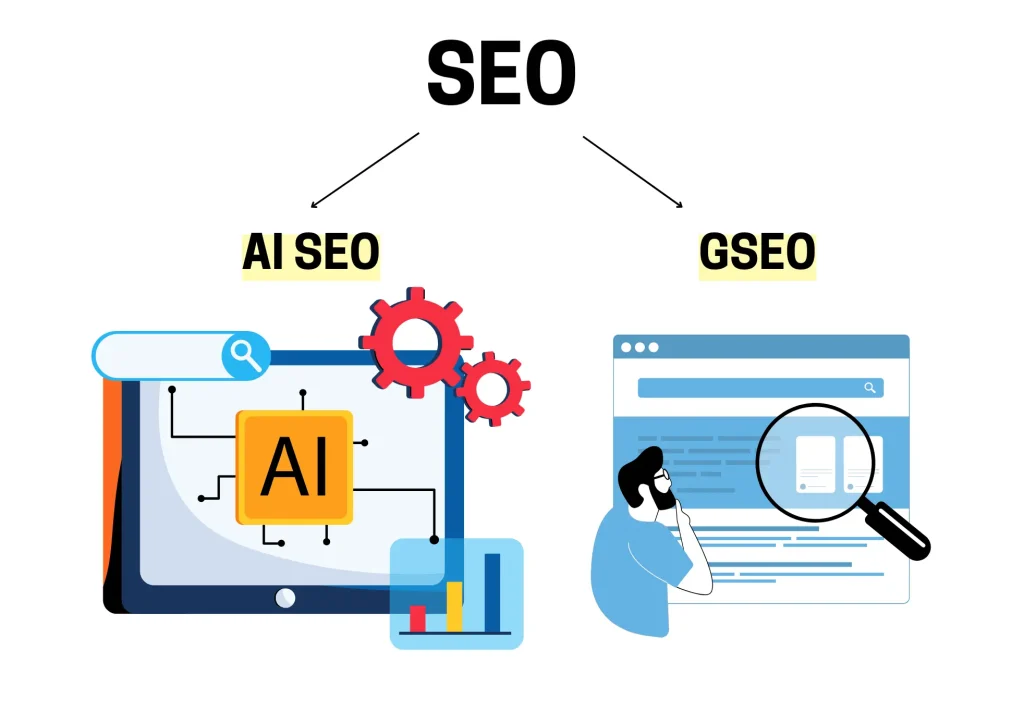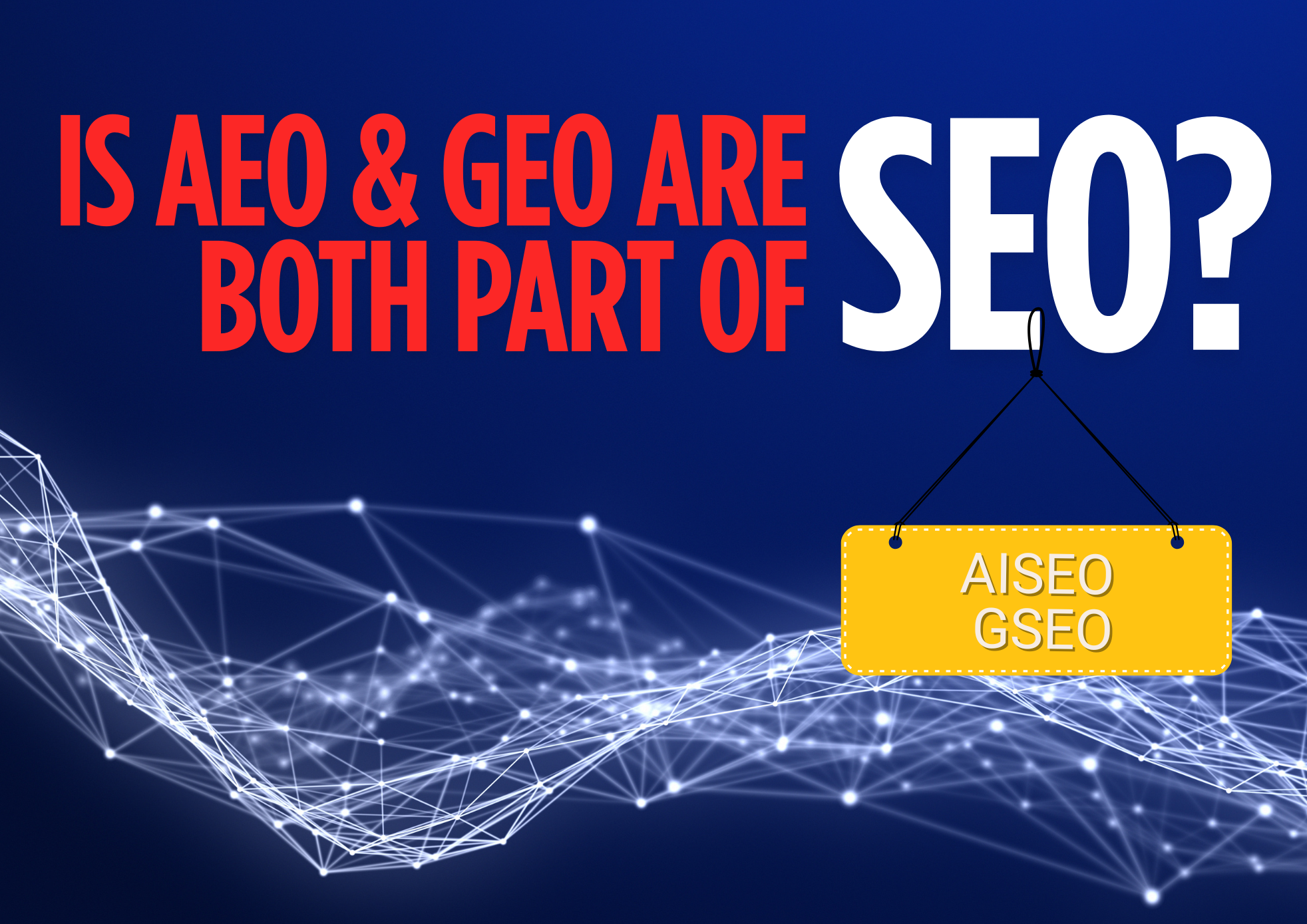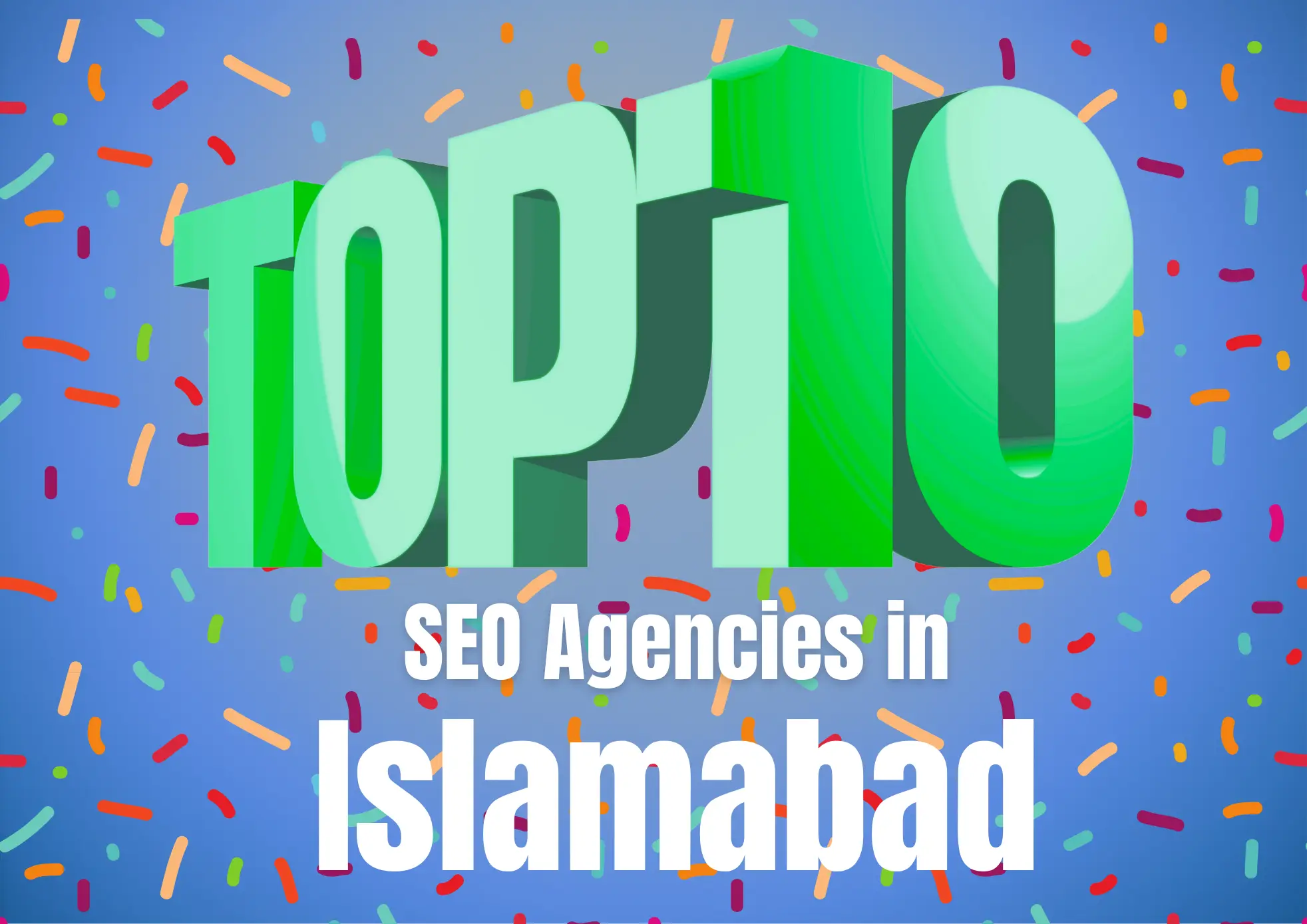AEO (AI Engine Optimization) and GEO (Generative Engine Optimization) are emerging subfields within SEO (Search Engine Optimization) but they are understood differently. The most accurate terms are Arificial Intelligence Search Engine Optimization (AISEO) and Generative Search Engine Optimization (GSEO). As search engines are increasingly using AI (Artificial Inteligence) and generative models to improve their user experience, optimizing for these technologies is becoming crucial.
Think of SEO as an umbrella term that encompasses various optimization strategies, including:

- Traditional SEO (keyword optimization, link building, etc.)
- AISEO (optimizing for AI-driven search results)
- GSEO (optimizing for generative models like chatbots and language models)
By understanding AISEO and GSEO, you can adapt your optimization strategies to stay ahead in the ever-evolving search landscape.
AISEO (ArtificiaI Intelligence Search Engine Optimization)
AISEO (Artificial Intelligence Search Engine Optimization) is about optimizing your online content so it’s easily understood and used by smart search engines and AI tools like Google’s SGE or ChatGPT. It means making your content super clear, factual, and well-organized so AI can confidently find it, interpret it, and use it to answer user questions directly.
Key Role in Search Engine Optimization (SEO)
- Focuses on optimizing content for AI-driven search results
- Involves understanding AI algorithms and their impact on search rankings
GSEO (Generative Search Engine Optimization)
GSEO (Generative Search Engine Optimization) is all about fine-tuning your online content so it’s perfectly understood and used by search engines that create their own answers using AI (like Google’s SGE or other AI chatbots). It means making your content so clear and authoritative that these AI systems can easily pull from it to generate accurate, direct responses for users.
Key Role in Search Engine Optimization (SEO)
- Specifically targets optimization for generative models like chatbots and language models
- Involves crafting content that resonates with these models
Evolution of Search Engine Optimization
SEO (Search Engine Optimization) is impacted by various Google algorithm updates, including those that use AI and machine learning. AISEO (AI Search Engine Optimization) and GSEO (Generative Search Engine Optimization) are strategies that adapt to these updates, ensuring optimal search engine rankings.
Some notable Google algorithm updates include:
- BERT (Bidirectional Encoder Representations from Transformers)
- MUM (Multitask Unified Model)
- Helpful Content Update
AI SEO and GSEO focus on optimizing content to work seamlessly with these AI-driven updates, improving search engine rankings and user experience.
Awareness and Understanding
Many people are still unfamiliar with the concepts of AI SEO and GSEO, making it crucial to educate audiences about these emerging fields in order to help them understand how generative AI is transforming search engine optimization and why adapting to these new strategies is essential for staying competitive online.
Benefits
- Improved search engine rankings
- Enhanced user experience
- Increased relevance in AI-driven search results
Adoption
Early adopters can gain a significant competitive edge by proactively adapting their strategies, making it essential for businesses and marketers to embrace these changes in order to thrive and stay ahead in the rapidly evolving digital landscape.
Future Prospects
The growing importance of AI in search engines is reshaping how content is created and optimized, as it requires new strategies that focus on clarity, relevance, and trustworthiness to meet the demands of AI-driven search algorithms.
Does Google Has Evolved into an AI Search Engine?
Google has indeed used AI into its search engine, enhancing its capabilities. Google’s AI-powered search features include:
- BERT (Bidirectional Encoder Representations from Transformers) for better understanding context and nuances in search queries.
- MUM (Multitask Unified Model) for more accurate and informative results.
- Featured snippets and answer boxes that use AI to provide direct answers.
While Google hasn’t fully transformed into a traditional AI search engine, its integration of AI significantly improves search results and user experience. You can say Google has “evolved to incorporate AI” or “uses AI-powered features” to describe this development.
Evidence of AI in Popular Search Engine
Bing
On bing it is mentioned that this search engine is powere by AI. Visit the link and see it for yourself.
Link: https://www.microsoft.com/en-us/bing?ep=1190&es=217&form=MA13QZ&ch=1&cs=578062562
Google has an official blog that describes the use of AI in search.
Link: https://blog.google/products/search/google-search-ai-mode-update/
Key Takeaway
In this short blog post we’ve covered:
- AEO (AI Engine Optimization) or AISEO (Artificial Search Engine Optimization)
- GEO (Generative Engine Optimization) or GSEO (Generative Search Engine Optimization)
- AI SEO and GSEO are subfields of SEO
- Evolution of SEO (Search Engine Optimization)
- Google’s algorithm updates (BERT, MUM, etc.)
- Search Engines use of in search



